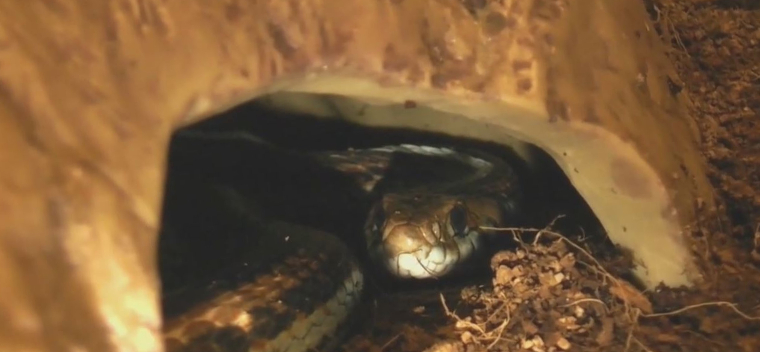-
info@aaanimalcontrol.com
Call us for help in your town
Humane Wildlife Education
Do snakes hibernate?
Need snake removal in your hometown? We service over 500 USA locations! Click here to hire us in your town and check prices- updated for year 2020.
Snakes do hibernate, but it's not exactly the same kind of hibernation as you would expect from other animals, such as bears. In snakes, the process is called brumation. It's a bit like hibernating, but they don't stay asleep. They don't like the cold weather at all, being cold-blooded animals, so they use this brumation process to slow down their metabolism.

Being cold-blood reptiles, snakes don't have a way to keep warm like other animals do, so this extreme slowing of their metabolism is necessary to keep them alive. They can sense when the cold temperatures are coming so move into cosy little dens that will keep them warm and protected. If the cold spell is out of the ordinary or happens very quickly, the snake may not have enough time to find a den, or the same den that they holed up in last year, and could potentially die.
Some species of snake will go into this hibernation-like state together, many of the same species in the same den. Much like in the same way that penguins will club together in the cold, the ones on the inside enjoying more heat than the ones on the outside of the huddle, snakes will come together in the same way. There really is safety in numbers. Snake species that come together in this way include copperheads and timber rattlesnakes, as well as black rat snakes and others. In some cases, there can be over a hundred snakes in one den spot, and this spot is referred to by experts as a “hibernaculum”.
If the temperature warms up enough to tempt the snake, it will wake up, if only for a few days, and then return to its den to hibernate when the temperatures plummet again. There are actually quite a few creatures that behave in this way during the cold spells, showing just how much these animals need to put themselves through in order to survive.
Where do snakes hibernate?
They need a den, as we have mentioned, and this will come in the form of spaces and hollows underneath the stumps of trees and growing trees, as well as in hollowed logs, caves, and other spots that are protected from the wind, rain, and snow, and can also keep the animal sheltered form frost and predators. This can often lead them into the path of conflict, either by trying to take over a den or burrow that has an existing animal in it, in which case, the snake usually wins, or by entering human residences, such as in basements.
For more information, you may want to click on one of these guides that I wrote:
How much does snake removal cost? - get the lowdown on prices.
How to get rid of snakes - my main snake removal info guide.
Example snake trapping photographs - get do-it-yourself ideas.
Snake job blog - learn from great examples of snake jobs I've done.


















